Science at home! Fun homemade experiments for the little ones. Let's learn about Capillarity and Transpiration!

Very good!! Before starting the fun it is important that we know and learn the theoretical part so that our children understand what the experiment is about.
Capillarity.
To understand this process we first remember two important properties of water due to the structure of its molecule. The water molecule consists of two hydrogen atoms and one oxygen atom arranged in such a way that on the oxygen side it has a negative charge and on the hydrogen side it has a positive charge. This charge difference is what makes the water molecule polar. Think of the consequences of this provision: as charges of different sign are attracted, the water molecules will attract strongly among them. This property of water is called cohesion. And there is not everything because also thanks to its polarity, water has a great attraction for other substances other than it. Therefore, water has a high adhesion. Summarizing: Cohesion: attraction between water molecules. Adhesion: attraction for other different molecules. Now we are able to explain the capillarity. Capillarity or capillary action is the ability of water to ascend against gravity through small tubes, pores or capillaries. The fact that water can thus defy gravity is due to the adhesion and cohesion properties of water. The water sticks to the surface of the tube by adhesion. The molecules that have adhered to the surface of the tube are strongly linked to other water molecules (great cohesion between them). In this way the molecules that have seized the tube drag their neighboring molecules pulling them up. And the water manages to climb.Perspiration.
Capillarity alone is not enough for water and mineral salts to travel the long way from the roots to the leaves. There comes a time when the mass of water is so great that the forces of adhesion and cohesion can not overcome gravity. To help the capillarity comes into action perspiration. The transpiration is the loss of water through evaporation through the leaves, mainly, but also by the stem and flowers. The loss of water causes the hydrostatic pressure in the conductive vessels to drop, which produces a push up the water column. The water that has risen will replace the one that has evaporated and the process will begin again.Yes now!! let the fun begin, let's put into practice what we have just explained
Experiment with flowers and coloring!!!
In this experiment we will use dye and some flowers to observe the process by which the plants transport water and nutrients from the soil to all the places in the plant.
Materials:
- Flowers of light color, preferably white. - Food coloring. - Glasses. - Scissors.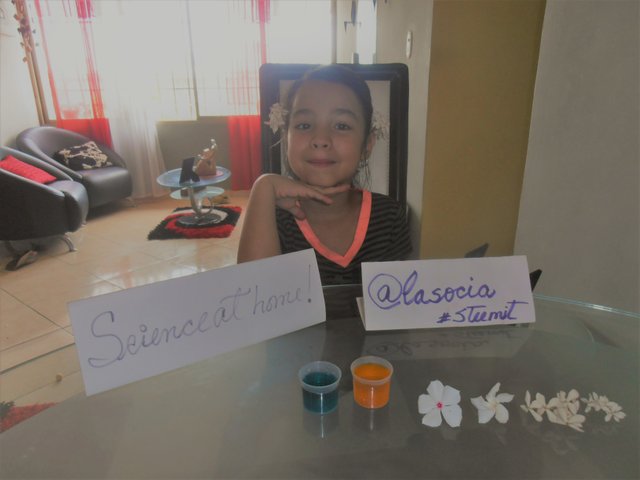
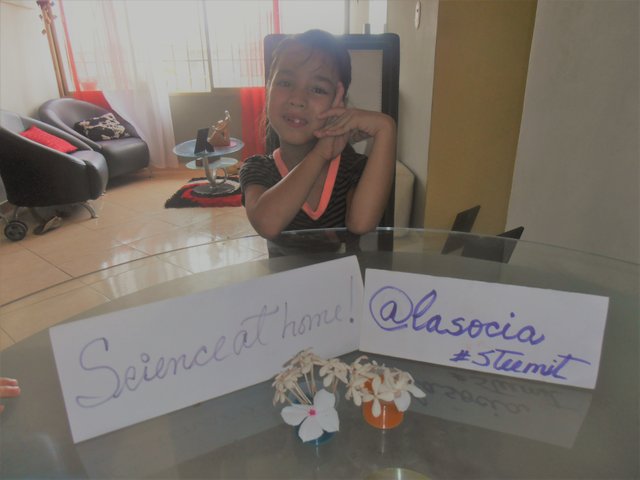
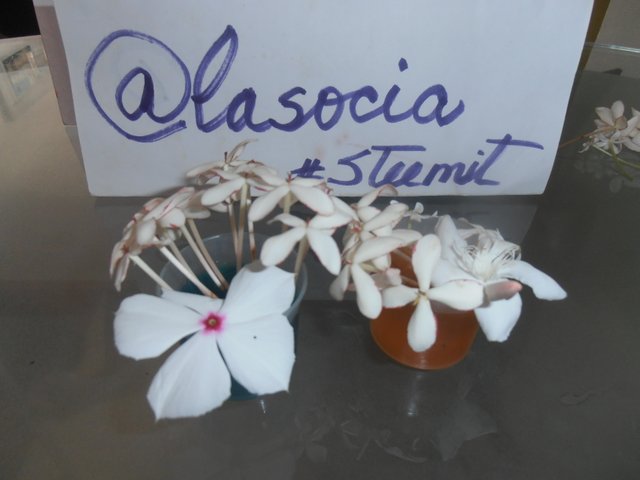
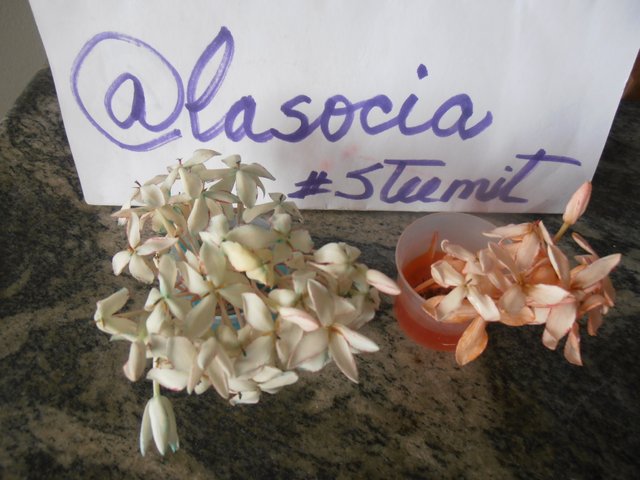

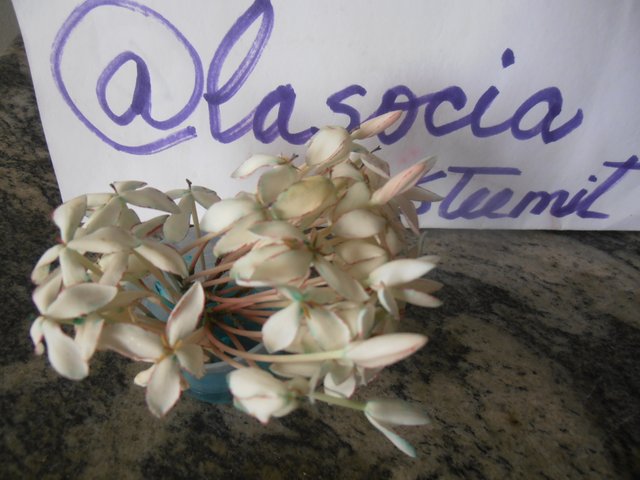
What has happened?
The plants transform the energy of the sun, the carbon dioxide (CO2) of the air and the water and the mineral salts of the soil into food through the process of photosynthesis. As photosynthesis is carried out in the leaves, there must be a transport mechanism so that the water and dissolved mineral salts in it ascend from the roots to the leaves. This transport is carried out thanks to the joint action of two physical phenomena: capillarity and transpiration. Our flowers are stained. A cut flower withers quickly. We can already imagine why. The flower is devoid of water and nutrients, but we can prolong its life if we put it in a glass of water. So at least you can replace the water that evaporates by perspiration. The flowers of our experiment absorb the colored water thanks to capillarity and perspiration. As a consequence, its petals and stem vessels (short to observe) stain. The process can take several days and it is also possible that the petals are not stained dramatically. It will depend on several factors related to atmospheric conditions and the characteristics of the dye you have used. For example if it is hot the flower will perspire more than if it is cold. The same thing happens to us, we sweat more or less depending on the temperature.


Pages reference:
- https://es.wikipedia.org/wiki/Capilaridad
- https://www.significados.com/capilaridad/
- https://es.wikipedia.org/wiki/Transpiración_vegetal
- https://deconceptos.com/ciencias-naturales/transpiracion
Congratulations! Your post has been selected as a daily Steemit truffle! It is listed on rank 5 of all contributions awarded today. You can find the TOP DAILY TRUFFLE PICKS HERE.
I upvoted your contribution because to my mind your post is at least 17 SBD worth and should receive 197 votes. It's now up to the lovely Steemit community to make this come true.
I am
TrufflePig, an Artificial Intelligence Bot that helps minnows and content curators using Machine Learning. If you are curious how I select content, you can find an explanation here!Have a nice day and sincerely yours,

TrufflePigIf you would like to support the educational community by delegating to @steemiteducation, please click on any of the following links. This will ensure that more teachers are supported on a daily basis.
100SP 200SP 300SP 400SP 500SP 750SP 1000SP 2000SP 3000SP 4000SP 5000SP 10,000SP 25,000SP
This is a good example of how simple experiments can explain important lessons. Besides, by the way it is done, it definitely holds the attention from children. Even youngsters can feel attracted to experiment more.
This type of learning is rarely seen in some school. If the topic is discussed, it is just theory. Nothing practical.
Good post, @lasocia. I learned a lot!
Thanks @edave, for visiting my blog! We as parents and teachers have the responsibility to find the most appropriate tools to educate our children and home experiments are usually very fun and educational at the same time! Regards!
Congratulations Mama! This post has been selected to be featured for the @steemitmamas Curation Post!
To view your post along with other great selections visit: SteemitMamas Curation Post #9 - Education.
What a thrill!! really thank you very much for taking into account my work, it is the first time that @steemitmamas, I selected for healing! I'm very happy!
This was such a fun science experiment @lasocia! This will sure get children curious and excited! I am always looking for new and fun projects to do with my children at school and this is definitely one we can do. Thank you so much for sharing and teaching us how to do this experiment :)
Hello @crosheille, thank you for visiting my bog !! the homemade experiments are great and our little ones have fun to the maximum and at the same time they learn, they are strategies that we can use at home and in school too!
You’re welcome! Yes I love it!! 😃
I love how you made scientific principles so easily explained and be understood!!! It is a brilliant idea using those flowers to see how they changed colours, @lasocia! Thank you for sharing this with us :) I agree with @trufflepig this post deserves so much more!
#steemitmamas